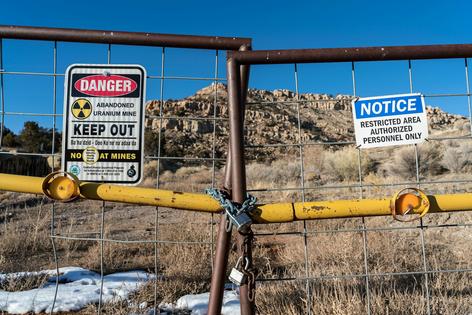Native American voices are finally factoring into energy projects – a hydropower ruling is a victory for environmental justice on tribal lands
Published in Science & Technology News
The U.S. has a long record of extracting resources on Native lands and ignoring tribal opposition, but a decision by federal energy regulators to deny permits for seven proposed hydropower projects suggests that tide may be turning.
As the U.S. shifts from fossil fuels to clean energy, developers are looking for sites to generate electricity from renewable sources. But in an unexpected move, the Federal Energy Regulatory Commission denied permits on Feb. 15, 2024, for seven proposed hydropower projects in Arizona and New Mexico.
The reason: These projects were located within the Navajo Nation and were proposed without first consulting with the tribe. FERC said it was “establishing a new policy that the Commission will not issue preliminary permits for projects proposing to use Tribal lands if the Tribe on whose lands the project is to be located opposes the permit.”
We are a cultural anthropologist and a water resource geographer who have studied tensions between Indigenous rights, climate governance and water management in the U.S. and globally for over 20 years. In our view, the commission’s decision could mark a historic turning point for government-to-government relations between the U.S. government and tribal nations.
How might this new approach shape future energy development on tribal lands throughout the U.S.? Given the federal government’s long history of exploiting Native American resources without tribal consent, we’re following FERC’s actions for further evidence before assuming that a new era has begun.
Around the world, many Indigenous communities argue that their lands have been treated as sacrifice zones for development. This includes the U.S., where the federal government holds 56.2 million acres in trust for various tribes and individuals, mostly in western states.
The trust responsibility requires the U.S. government to protect Indigenous lands, resources and rights and to respect tribal sovereignty. Consulting with tribes about decisions that affect them is fundamental to this relationship.
Energy resources on U.S. Native lands include coal, oil, uranium, solar, wind and hydropower. There is a long history of coal and uranium mining in Navajo territory in the Southwest, and tribal lands now are targets for renewable energy projects. Large fractions of known reserves of critical minerals for clean energy, like copper and cobalt, are on or near Native lands.
Many past energy projects have left scars. Navajo lands are studded with abandoned uranium mining sites that threaten residents’ health. Over 1.1 million acres of tribal lands have been flooded by hundreds of dams built for hydropower and irrigation. Fossil fuel pipelines like Dakota Access in North Dakota and Line 5 in Wisconsin and Michigan carry oil across Native lands, threatening water supplies in the event of leaks or spills.
The seven permits FERC denied in February 2024 were requested by private companies seeking to build pumped hydropower storage projects. These systems pump water uphill to a reservoir for storage. When power is needed, water is released to flow downhill through turbines, generating electricity as it returns to a lower reservoir or river.
...continued











Comments